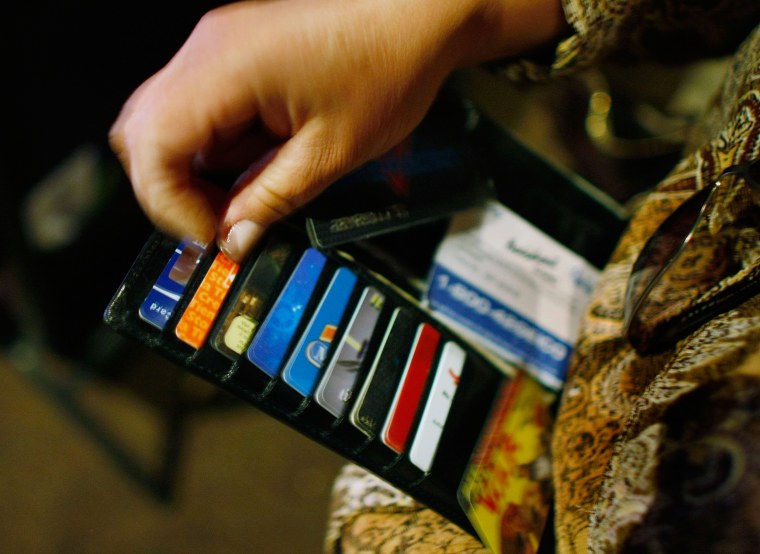The credit card market is alive and well – and growing, according to a new report from the Consumer Financial Protection Bureau released on Wednesday. The biennial report to Congress found that the total number of credit card accounts, the total credit available to cardholders, and the average amount of card debt have all increased over the past two years.
During that same period, the delinquency rate (paying late or not at all) – which had fallen to historic lows following the financial crisis of 2007-2009 – has “modestly increased,” the CFPB analysis showed.
“Even though the increase in delinquencies is slight, it is a troubling sign,” Bruce McClary, vice president of communications at the National Foundation for Credit Counseling, told NBC News. “There's nothing wrong with using a credit card, which can be a useful financial tool, as long as you make payments on time and avoid going deep into debt.”
The credit card industry spends billions of dollars each year to attract new customers and that investment is paying off.
“The market has grown in size, in the number of its offerings and participants, and in the scope and features of its products,” the CFPB report noted. Some of the major findings:
- Credit card companies extended more than $4 trillion in credit lines – used or unused – as of mid-2017. That’s up from the end of the great recession, but below the high of $4.4 trillion in mid-2008.
- Consumers opened about 110 million new credit card accounts in 2016. That’s roughly 50 percent higher than 2010 and higher than any single year since 2007. New account volume has not yet return to the pre-recession level.
- Although the number of cards in people’s wallets has increased in recent years, the average cardholder has fewer credit cards than before the recession. About 169 million Americans had at least one card as of mid-2017. Cardholders with prime credit scores now have, on average, more than four cards. Prior to the recession, they had more than five.
"Card issuers have loosened up on approvals and credit lines as the economy has recovered, but things still remain below the Wild Wild West, pre-recession levels,” said Greg McBride, chief financial analyst at Bankrate.com.
A troubling trend
Average credit card debt increased 9 percent since 2015. The average balance for cardholders with low credit scores rose at a faster rate, the CFPB reported. Those with deep subprime scores – indicating a really bad credit history – saw a 26 percent increase in their average credit card debt these past two years.
Consumers opened about 110 million new credit card accounts in 2016 - more than in any single year since 2007.
“This increased debt for people with deep subprime scores is very troubling because they already pay the highest price for what they owe,” McClary told NBC News. “The larger the credit card balance, the more these subprime borrowers will feel the financial squeeze from interest rates that can sometimes be well above 25 percent.”
People with poor credit or no credit history are increasingly turning to secured cards. These credit cards require a cash security deposit – the larger the deposit, the higher the credit limit. The CFPB reports that the number of new secured cards grew by 7 percent from 2015 to 2016.
Higher rates ahead
The average American household that’s carrying credit card debt has a balance of $15,654, according to a recent report from the financial website NerdWallet. That unpaid debt becomes increasingly costly as interest rates rise.
The national average APR hit 16.21 percent last week, according to the latest report from creditcards.com. That’s the highest average APR the website has recorded since it began tracking rates in mid-2007. Credit card interest rates are expected to go even higher in 2018, as the Federal Reserve continues to boost interest rates.
Anyone carrying a balance needs to pay it off as quickly as possible before interest rates bump up again, financial experts tell NBC News.
“There are many ways to accomplish that goal, but squeaking by on minimum monthly payments is not one of them,” McClary said.
Herb Weisbaum is The ConsumerMan. Follow him on Facebook and Twitter or visit The ConsumerMan website.
